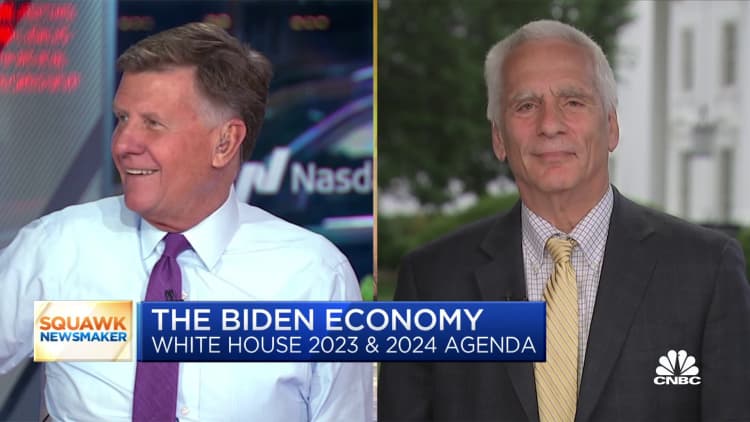
After leaning heavily on their paychecks as prices spiked over the last year, households are finally feeling some relief.
As of May, 57% of consumers said they were living paycheck to paycheck, down from 61% the month earlier, according to a new LendingClub report.
Workers last month saw their buying power improve for the first time in two years, as inflation eased off the pandemic-era peak.
More from Personal Finance:
57% of people are uncomfortable with their emergency savings
Americans’ buying power rose for first time since March 2021
Average credit card interest rate is a record 20.69%
The consumer price index, which measures the average change in prices for consumer goods and services, declined to an annual rate of 4% in May after hitting 9.1% in June 2022, the highest level in four decades.
However, a year of high costs took a toll on household finances, according to the Federal Reserve Board’s Economic Well-Being of U.S. Households report. The share of adults doing at least OK financially fell sharply in 2022, to the lowest level since 2016, the report found.
During that time, many consumers dipped into their savings, relied on credit cards or turned to personal loans for everyday expenses, a separate survey by LendingTree found.
High borrowing costs are stressing households
Americans now owe nearly $1 trillion in credit card debt, a record high, according to the most recent data from the Federal Reserve Bank of New York. Interest rates on credit cards are also at historic levels, at more than 20%. Although much lower than a credit card, even personal loan rates are in the double digits.
“While these personal loans can help people extend their budget in the short term, the interest rates and other costs associated with them can keep people stuck in the cycle of debt,” said LendingTree’s chief credit analyst Matt Schulz.
Still today, 73% of consumers said higher prices have affected their ability to cover monthly expenses, including cell phone bills, utilities, auto insurance and cable and internet service, according to a report from Doxo on how Americans pay their bills.
Savings are a buffer against economic hardship
Having a cash cushion can prevent a financial catastrophe in the event of an unexpected expense or job loss. Yet, most Americans are uncomfortable with the level of money they have in a rainy-day fund, according to a recent Bankrate survey.
“Despite their best efforts to live within their means, consumers face unexpected expenses regularly that stress their budgets and impact their ability to meet their financial obligations, causing the financial health of many to remain fragile,” said Alia Dudum, LendingClub’s money expert.
Fewer than half of Americans have enough emergency savings to cover at least three months of expenses, which is the minimum amount most financial experts recommend. About 22% have no emergency savings at all, according to Bankrate.
“Aim to have six months’ worth of personal expenses set aside in risk-free securities or cash,” advised Reese Harper, a certified financial planner and CEO of financial planning software firm Elements.
To get there, save at least 10% of your income a month in an after-tax brokerage account or a high-yield savings account, he said, which will “boost your financial confidence and reduce stress.”

